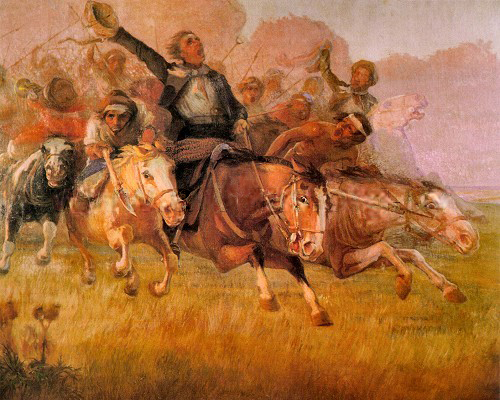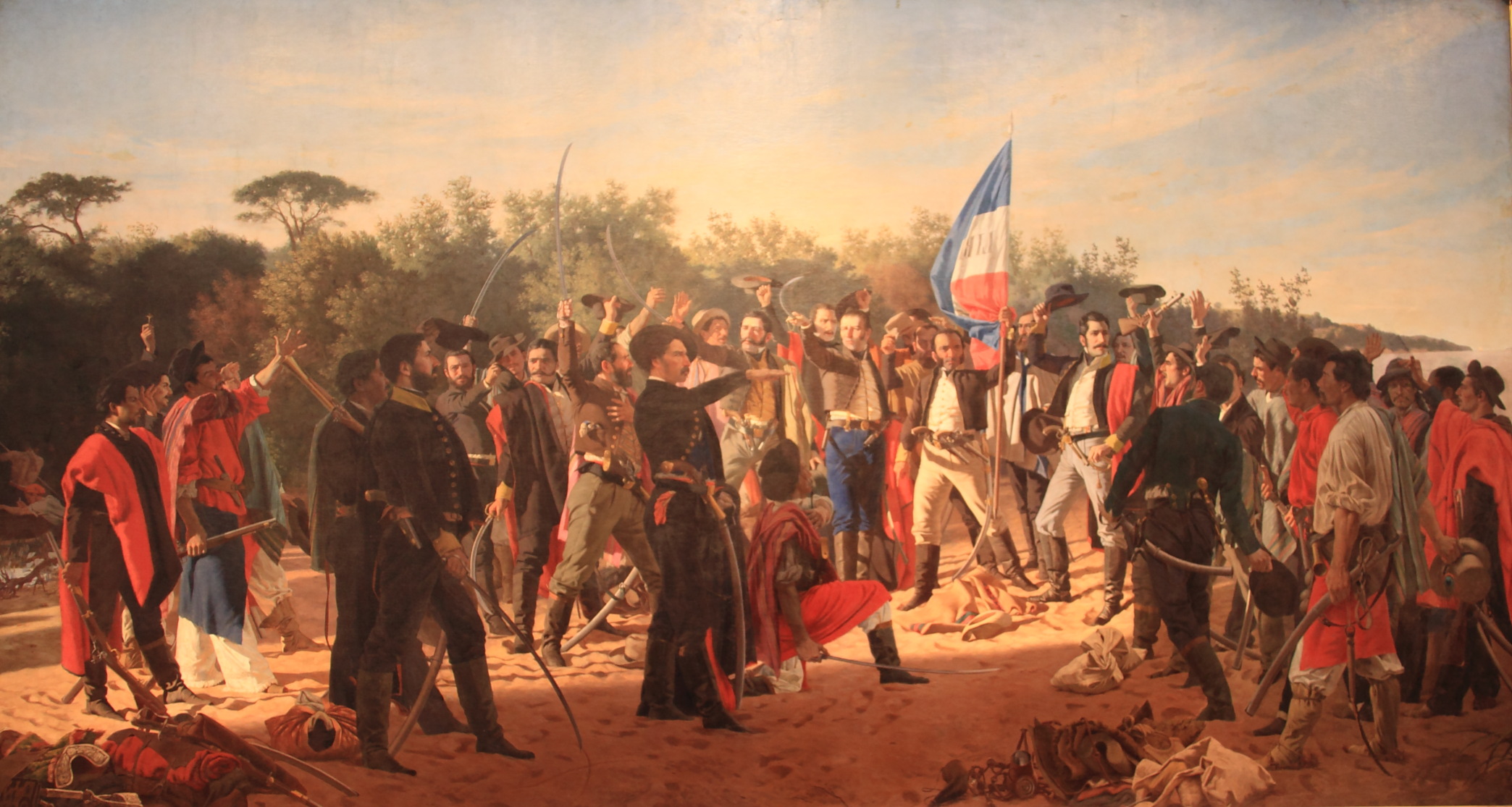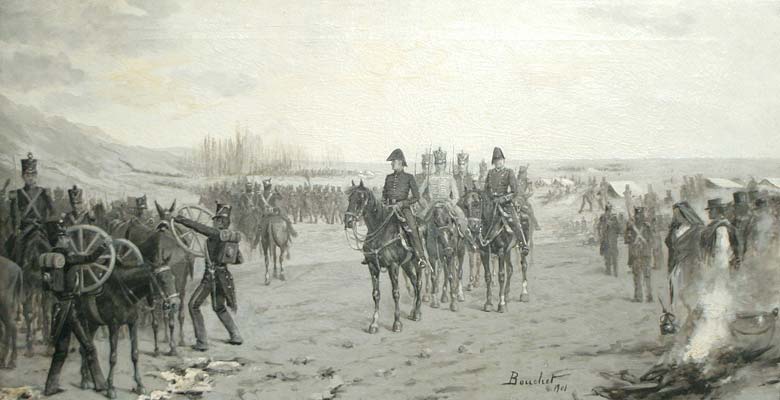|
Juan Manuel Blanes
Juan Manuel Blanes (June 8, 1830 – April 15, 1901) was a Uruguayan painter of the Realism (art), Realist school. Life and work Blanes was born in Montevideo, Uruguay, in 1830. He was raised by his mother, with whom he relocated to the countryside in his early teens. Blanes took an interest in drawing at this point, and shortly afterwards, was hired as an illustrator for a Montevideo daily newspaper, ''El Defensor de la Independencia Americana''. Earning extra income with watercolors, he returned to his mother and, in 1854, established his first wikt:atelier, atelier.Museo Blanes: Biografía He married María Linari, and in 1855, the couple settled in Salto, Uruguay, Salto, where he worked as a portrait painter. They relocated to Concepción del Uruguay (across the Uruguay River, in Argentina) in 1857, and Blanes wa ... [...More Info...] [...Related Items...] OR: [Wikipedia] [Google] [Baidu] [Amazon] |
Montevideo
Montevideo (, ; ) is the capital city, capital and List of cities in Uruguay, largest city of Uruguay. According to the 2023 census, the city proper has a population of 1,302,954 (about 37.2% of the country's total population) in an area of . Montevideo is situated on the southern coast of the country, on the northeastern bank of the Río de la Plata. A Portuguese garrison was established in the place where today is the city of Montevideo in November 1723. The Portuguese garrison was expelled in February 1724 by a Spanish soldier, Bruno Mauricio de Zabala, as a strategic move amidst the Spanish people, Spanish-Portuguese people, Portuguese dispute over the Río de la Plata Basin, platine region. There is no official document establishing the foundation of the city, but the "Diario" of Bruno Mauricio de Zabala officially mentions the date of 24 December 1726 as the foundation, corroborated by presential witnesses. The complete independence from Buenos Aires as a real city was not ... [...More Info...] [...Related Items...] OR: [Wikipedia] [Google] [Baidu] [Amazon] |
Florence
Florence ( ; ) is the capital city of the Italy, Italian region of Tuscany. It is also the most populated city in Tuscany, with 362,353 inhabitants, and 989,460 in Metropolitan City of Florence, its metropolitan province as of 2025. Florence was a centre of Middle Ages, medieval European trade and finance and one of the wealthiest cities of that era. It is considered by many academics to have been the birthplace of the Renaissance, becoming a major artistic, cultural, commercial, political, economic and financial center. During this time, Florence rose to a position of enormous influence in Italy, Europe, and beyond. Its turbulent political history includes periods of rule by the powerful House of Medici, Medici family and numerous religious and republican revolutions. From 1865 to 1871 the city served as the capital of the Kingdom of Italy. The Florentine dialect forms the base of Italian language, standard Italian and it became the language of culture throughout Italy due to ... [...More Info...] [...Related Items...] OR: [Wikipedia] [Google] [Baidu] [Amazon] |
Rome
Rome (Italian language, Italian and , ) is the capital city and most populated (municipality) of Italy. It is also the administrative centre of the Lazio Regions of Italy, region and of the Metropolitan City of Rome. A special named with 2,746,984 residents in , Rome is the list of cities in the European Union by population within city limits, third most populous city in the European Union by population within city limits. The Metropolitan City of Rome Capital, with a population of 4,223,885 residents, is the most populous metropolitan cities of Italy, metropolitan city in Italy. Rome metropolitan area, Its metropolitan area is the third-most populous within Italy. Rome is located in the central-western portion of the Italian Peninsula, within Lazio (Latium), along the shores of the Tiber Valley. Vatican City (the smallest country in the world and headquarters of the worldwide Catholic Church under the governance of the Holy See) is an independent country inside the city boun ... [...More Info...] [...Related Items...] OR: [Wikipedia] [Google] [Baidu] [Amazon] |
José Gervasio Artigas
José Gervasio Artigas Arnal (; June 19, 1764 – September 23, 1850) was a soldier and statesman who is regarded as a national hero in Uruguay and the father of Uruguayan nationhood. Born in Montevideo, Artigas enlisted in the Spanish military in 1797 and fought the British in the Anglo-Spanish War (1796–1808), Anglo-Spanish War. At the outbreak of the Spanish American wars of independence, Spanish-American wars of independence, Artigas supported the Primera Junta in Buenos Aires against Spain. He defeated the Spanish royalists at Battle of Las Piedras (1811), Las Piedras and laid siege to Montevideo, but was forced to withdraw in the face of Portuguese invasion of the Banda Oriental (1811–1812), Portuguese intervention. Artigas subsequently broke with the United Provinces of the Río de la Plata, centralist government of Buenos Aires and took over Montevideo in 1815. He then oversaw the creation of the Federal League (1815–1820), Federal League, an alliance of six ... [...More Info...] [...Related Items...] OR: [Wikipedia] [Google] [Baidu] [Amazon] |
Máximo Santos
Máximo Benito Santos Barbosa (15 April 1847 – 19 May 1889) was a Uruguayan political and military figure who was President of Uruguay from 1882 to 1886. He was member of the Colorado Party. He governed as an authoritarian in an alliance with the military. Background Santos pursued a career in the military, prior to serving as Minister for War from 1880 to 1882. He was a member of the Colorado Party (Uruguay). In 1882 Miguel Alberto Flangini Ximénez, who served briefly as acting President of Uruguay, stepped down from office. President of Uruguay (1st term) Succeeding acting President Flangini, Santos served as President of Uruguay from 1882 until 1886. Creation of Flores Department Among Santos's lasting acts as President was the creation of the Flores Department in the interior of the country, named after assassinated former President of Uruguay General Venancio Flores, who hailed from the territory incorporated as a department. Other features of his rule He also in a m ... [...More Info...] [...Related Items...] OR: [Wikipedia] [Google] [Baidu] [Amazon] |
Brazil
Brazil, officially the Federative Republic of Brazil, is the largest country in South America. It is the world's List of countries and dependencies by area, fifth-largest country by area and the List of countries and dependencies by population, seventh-largest by population, with over 212 million people. The country is a federation composed of 26 Federative units of Brazil, states and a Federal District (Brazil), Federal District, which hosts the capital, Brasília. List of cities in Brazil by population, Its most populous city is São Paulo, followed by Rio de Janeiro. Brazil has the most Portuguese-speaking countries, Portuguese speakers in the world and is the only country in the Americas where Portuguese language, Portuguese is an Portuguese-speaking world, official language. Bounded by the Atlantic Ocean on the east, Brazil has a Coastline of Brazil, coastline of . Covering roughly half of South America's land area, it Borders of Brazil, borders all other countries and ter ... [...More Info...] [...Related Items...] OR: [Wikipedia] [Google] [Baidu] [Amazon] |
Thirty-Three Orientals
The ''Treinta y Tres Orientales'' (English: Thirty-Three Orientals or Thirty-Three Easterners) was a revolutionary group led by Juan Antonio Lavalleja and Manuel Oribe against the Empire of Brazil. Their actions culminated in the foundation of modern Uruguay. They became famous by the name of the Treinta y Tres Orientales when, in 1825, they began an insurrection for the independence of Banda Oriental, Oriental Province, a historical territory encompassing modern Uruguay and part of modern Brazilian Rio Grande do Sul State, from Brazilian control. The group was also known as the Thirty Three Immortals. Background Between 1816 and 1820, the United Kingdom of Portugal, Brazil and the Algarves invaded and occupied the post-Spanish ''Provincia Oriental''. These Luso-Brazilian forces Portuguese conquest of the Banda Oriental, easily defeated the resistance of the forces of José Gervasio Artigas who, when routed, had to abandon the province in 1820, and went into self-exile in Pa ... [...More Info...] [...Related Items...] OR: [Wikipedia] [Google] [Baidu] [Amazon] |
Juan Manuel Blanes - El Juramento De Los Treinta Y Tres Orientales
''Juan'' is a given name, the Spanish language, Spanish and Manx language, Manx versions of ''John (given name), John''. The name is of Hebrew origin and has the meaning "God has been gracious." It is very common in Spain and in other Spanish-speaking countries around the world and in the Philippines, and also in the Isle of Man (pronounced differently). The name is becoming popular around the world and can be pronounced differently according that region. In Spanish language, Spanish, the diminutive form (equivalent to ''Johnny'') is , with feminine form (comparable to ''Jane'', ''Joan'', or ''Joanna'') , and feminine diminutive (equivalent to ''Janet'', ''Janey'', ''Joanie'', etc.). Chinese terms * ( or 娟, 隽) 'beautiful, graceful' is a common given name for Chinese women. * () The Chinese character :wiktionary:卷, 卷, which in Mandarin is almost homophonic with the characters for the female name, is a division of a traditional Chinese manuscript or book and can be tran ... [...More Info...] [...Related Items...] OR: [Wikipedia] [Google] [Baidu] [Amazon] |
Chile
Chile, officially the Republic of Chile, is a country in western South America. It is the southernmost country in the world and the closest to Antarctica, stretching along a narrow strip of land between the Andes, Andes Mountains and the Pacific Ocean. Chile had a population of 17.5 million as of the latest census in 2017 and has a territorial area of , sharing borders with Peru to the north, Bolivia to the northeast, Argentina to the east, and the Drake Passage to the south. The country also controls several Pacific islands, including Juan Fernández Islands, Juan Fernández, Isla Salas y Gómez, Desventuradas Islands, Desventuradas, and Easter Island, and claims about of Antarctica as the Chilean Antarctic Territory. The capital and largest city of Chile is Santiago, and the national language is Spanish language, Spanish. Conquest of Chile, Spain conquered and colonized the region in the mid-16th century, replacing Incas in Central Chile, Inca rule; however, they Arauco War ... [...More Info...] [...Related Items...] OR: [Wikipedia] [Google] [Baidu] [Amazon] |
Rancagua
Rancagua () is a city and commune in central Chile and part of the Rancagua conurbation. It is the capital of the Cachapoal Province and of the O'Higgins Region, located south of the national capital of Santiago. It was originally named Santa Cruz de Triana by Spanish colonists. In 2012, its population was 232,211. The main economic activities range from mining, tourism, agriculture, timber, food production and services to minor industrial activities. The city also serves as the administrative and legal center of the region. Together with Machalí and Gultro, it forms the Rancagua conurbation. After Curicó, Talca and Concepción, it is one of the most important and densely populated cities of the south central zone of Chile. History Foundation period The Rancagua Valley was occupied by the local Picunche. They fell briefly under the control of the Inca Empire in the 15th century. Its remains in structures can still be found near the city today. Through their civil ... [...More Info...] [...Related Items...] OR: [Wikipedia] [Google] [Baidu] [Amazon] |
José De San Martín
José Francisco de San Martín y Matorras (; 25 February 177817 August 1850), nicknamed "the Liberator of Argentina, Chile and Peru", was an Argentine general and the primary leader of the southern and central parts of South America's successful struggle for independence from the Spanish Empire who served as the Protector of Peru. Born in Yapeyú, Corrientes, in modern-day Argentina, he left the Viceroyalty of the Río de la Plata at the early age of seven to study in Málaga, Spain. In 1808, after taking part in the Peninsular War against France, San Martín contacted South American supporters of independence from Spain in London. In 1812, he set sail for Buenos Aires and offered his services to the United Provinces of the Río de la Plata, present-day Argentina and other countries. After the Battle of San Lorenzo and time commanding the Army of the North during 1814, he organized a plan to defeat the Spanish forces that menaced the United Provinces from the north, us ... [...More Info...] [...Related Items...] OR: [Wikipedia] [Google] [Baidu] [Amazon] |
Argentine War Of Independence
The Argentine War of Independence () was a secessionist civil war (until 1816) fought from 1810 to 1818 by Argentine patriotic forces under Manuel Belgrano, Juan José Castelli, Martín Miguel de Güemes, Martin Miguel de Guemes and José de San Martín against Royalist (Spanish American Revolution), royalist forces loyal to the Spanish Empire, Spanish crown. On July 9, 1816, an Congress of Tucumán, assembly met in San Miguel de Tucumán, Argentine Declaration of Independence, declaring independence with provisions for a Constitution of Argentina, national constitution. Background The territory of modern Argentina was part of the Spanish Viceroyalty of the Río de la Plata, with its capital city in Buenos Aires, seat of government of the Spanish viceroy. Modern Uruguay, Paraguay and Bolivia were also part of the viceroyalty, and began their push for autonomy during the conflict, becoming independent State (polity), states afterwards. The vast area of the territory and slow ... [...More Info...] [...Related Items...] OR: [Wikipedia] [Google] [Baidu] [Amazon] |





